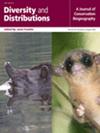Latitudinal Trends in Genetic Diversity and Distinctiveness of Quercus robur Rear Edge Forest Remnants Call for New Conservation Priorities
Abstract
Aim
Knowledge of the spatial distribution of intraspecific genetic variation is essential for planning conservation actions, designing networks of protected areas, and informing possible assisted migration strategies. Although the Italian peninsula harbours unique genetic variation as a legacy of Quaternary migrations, only sporadic genetic information is available for forest tree species. Here, we present the first geographically comprehensive genetic characterisation of Quercus robur, an iconic broadleaved species of European floodplain forests, in an area which acted as a primary glacial refugium for the species.
Location
Italy.
Methods
745 individuals from 25 populations were sampled and genotyped with 16 nuclear microsatellite markers. Their genetic structure was assessed through various metrics of diversity and distinctiveness, as well as by Bayesian clustering and multivariate methods. The demographic history of inferred gene pools was evaluated through Approximate Bayesian Computation analysis.
Results
Genetic distinctiveness showed a decline with increasing latitude, while allelic richness reached its peak in central Italy. A south-to-north trend in the complexity of the genetic structure was observed, with peninsular Italy being characterised by intermingled gene pools in contrast to the relative homogeneity exhibited by northern populations. Demographic inference indicated that the southern gene pool has been genetically isolated since the penultimate interglacial, whereas populations from central Italy persisted locally in a mosaic of small refugia during the last glaciation.
Main Conclusions
Our results brought out the complexity of the genetic structure of forest trees' populations in southern Europe. At least three Q. robur refugia contributed to the genetic layout of extant populations after the last glacial period, but refugial areas were probably even more numerous in central Italy. Such a detailed characterisation sheds new light on the priorities to be established for the conservation of highly fragmented Q. robur populations in an area rich in diversified genetic lineages.


 求助内容:
求助内容: 应助结果提醒方式:
应助结果提醒方式:


